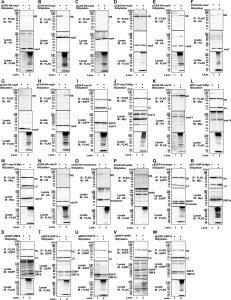In a recent study, researchers shed light on a unique enzyme in the SARS-CoV-2 virus that allows it to bypass the body’s initial immune defences, potentially explaining why it is more infectious than its predecessors, SARS and MERS. This insight into the virus’s mechanisms could pave the way for more effective antiviral treatments, including drugs aimed specifically at SARS-CoV-2 or future, similar viruses.
The immune system’s response to a viral attack has two primary defence layers: the innate and adaptive immune responses. The adaptive immune system, which forms the basis of vaccines, becomes more effective against a specific pathogen through repeated exposure. In contrast, the innate immune system acts as a broad, immediate response to pathogens using various molecular mechanisms.
The team investigated a molecular identifier called ISG15 (Figure 1) that the innate immune system uses to disrupt viral assembly. They observed that SARS-CoV-2 possesses a unique enzyme that effectively removes this tag, prompting the team to study how this impacts the virus’s ability to counteract the body’s defences. They report that ISG15 binds to a specific location on the virus’s nucleocapsid protein—the protein scaffold that packages the virus’s genetic material. For the virus to replicate, multiple nucleocapsid proteins must connect. However, the presence of the ISG15 tag disrupts this connection, stopping the virus’s assembly process.

Figure 1: ISGylation assay of SARS-CoV-2 proteins. HEK293T cells were transfected with the expression plasmid encoding N-terminal HA, C-terminal Myc-His6, or N-terminal EGFP-fused non-structural proteins (nsp1 to 16, except for nsp3 and nsp11) (A–N), structural proteins (membrane, spike, or envelope) (O–Q), and ORF proteins (3a, 6, 7a, 7b, 8, and 10, except for 3b) (R–W) and FLAG-ISG15 together with E1 (UBE1L), E2 (UbcH8), and E3 (HERC5), followed by immunoprecipitation with anti-FLAG mouse monoclonal antibody (mAb (M2) and detection with anti-HA, anti-Myc, or EGFP antibodies, respectively. IP, immunoprecipitation; IB, immunoblotting; NS, non-specific band; LC, light chain; HC, heavy chain. Input samples (indicated as lysate) were detected with anti-FLAG mouse mAb (M2). The immunoblots are representative of three independent experiments.
SARS-CoV-2 shares many structural similarities with SARS and MERS, belonging to the same coronavirus family. Both SARS and MERS viruses also possess enzymes capable of removing ISG15 tags. However, they found that the efficiency of SARS-CoV-2’s enzyme in removing ISG15 is significantly higher.
The researchers believe that understanding this mechanism could lead to new antiviral therapies. This research offers a fresh perspective on why SARS-CoV-2 has been so difficult to contain and highlights new avenues for treatment, not only for this virus but potentially for other future pathogens.
Journal article: Rhamadianti, A.F., 2024. SARS-CoV-2 papain-like protease inhibits ISGylation of the viral nucleocapsid protein to evade host anti-viral immunity. Journal of Virology.
Summary by Stefan Botha










